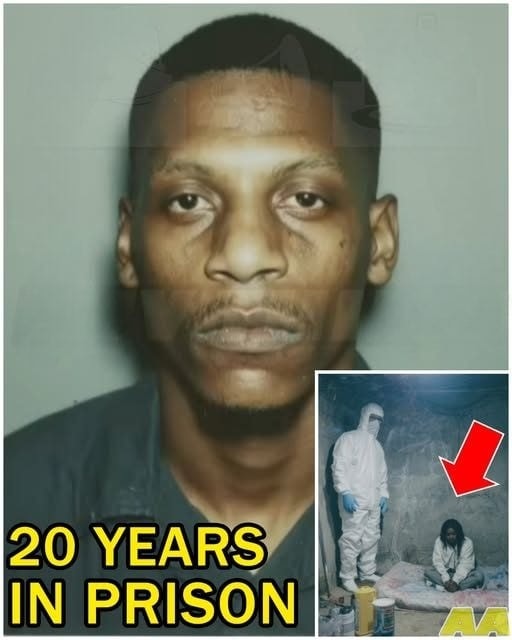For decades, the city of Chicago has carried the weight of stories that challenged its soul — stories of resilience, community, and, at times, deep reflection. Among those, few have left as lasting a mark as the story of Marcus and Sarah Holloway.
To many, their names once symbolized tragedy. But in time, they came to represent something much larger — the fragility of justice when truth becomes clouded by assumption, and the strength of human endurance when hope refuses to fade.
This is not simply a tale of crime or courts. It’s a meditation on perception, truth, and the unseen cost of being wrong in a world too ready to decide.
The Beginning of an Ordinary Love
In the summer of 2000, the Holloways were, by all outward signs, a picture of stability.
Marcus was a young mechanic with an unmatched work ethic, the kind of man who could rebuild an engine from memory. Sarah, a teaching assistant at a neighborhood school, was known for her kindness, her love of children, and her laughter that could soften any room.
They lived in a modest home on the outskirts of Chicago, surrounded by friends and family who admired their closeness. Their children, two bright and curious little ones, filled the home with energy and noise — the good kind, the kind that signals a house filled with love.
Life was simple, predictable, and happy. Until one morning when silence replaced everything they knew.
The Day Everything Stopped
It was a June morning like any other. Marcus had finished his overnight shift at the auto shop, driving home as the first rays of daylight colored the streets. When he arrived, he noticed the front door slightly ajar. Inside, the house was quiet. The smell of coffee hung in the air, and a morning show murmured faintly from the television.
Sarah’s phone, purse, and car keys sat on the kitchen counter — untouched. Her car was still parked outside.
Marcus assumed she had gone for an early walk or to visit a neighbor. But as minutes turned to hours, and calls to her friends and workplace yielded nothing, worry began to harden into fear. By noon, he contacted the local authorities.
What began as a simple missing-persons call would soon become a saga that exposed deep cracks in the very system built to protect the innocent.
A Search That Became a Judgment
The first hours of any disappearance are crucial. Officers canvassed the neighborhood, interviewed neighbors, and searched local parks. At first, it was treated as a case of a missing person — possibly voluntary, possibly not.
But as the investigation stretched into days without progress, the tone shifted.
Detectives began looking more closely at Marcus. It wasn’t unusual; statistically, spouses are often scrutinized first. But what began as routine soon became accusatory. Small inconsistencies in Marcus’s timeline — fatigue from a long night shift, minor memory gaps — were treated as red flags.
One neighbor mentioned hearing “raised voices” days earlier, though they couldn’t say who was speaking or what was said.
Investigators found a few unexplained details — minor but enough to change the direction of the inquiry.
And just like that, the search for Sarah became the scrutiny of Marcus.
When Words Become Walls
Marcus was brought in for questioning. For hours, he sat under harsh lights, answering the same questions repeatedly. He wasn’t a trained speaker or legal expert — just a husband terrified for his missing wife. Fatigue and confusion blurred his focus.
Eventually, a written statement appeared before him — one that summarized what detectives said “must have happened.” He didn’t fully understand it, and in a state of exhaustion, he signed it.
Without direct evidence, the narrative shifted from uncertainty to certainty. Authorities believed they had their answer. A public story began to form — one that satisfied the collective need for resolution.
Soon after, charges were filed.
The Trial That Decided Too Quickly
Marcus’s trial lasted less than two weeks. The defense was underfunded and unprepared. Evidence that could have introduced doubt was dismissed as irrelevant. Testimonies that contradicted each other were never cross-examined properly.
With no body and limited physical proof, the case leaned heavily on interpretation — on the assumption that absence itself was evidence.
After just a few hours of deliberation, the jury returned with a verdict: guilty.
Marcus was sentenced to decades in prison. The world outside moved on, believing the story had reached its conclusion.
But the truth was still waiting.
Years Behind Walls and a Voice That Wouldn’t Fade
Inside the walls of Stateville Correctional Center, Marcus began what felt like an endless wait. But he refused to let his story die quietly.
He wrote hundreds of letters — to lawyers, journalists, and organizations that specialized in wrongful convictions. Most went unanswered. But one day, a letter reached an investigative reporter named Dana Ruiz, who had spent years covering stories where facts didn’t quite align with outcomes.
Something in Marcus’s account — its detail, humility, and quiet persistence — caught her attention. She requested access to the old case files. What she found would unravel two decades of certainty.
The Investigation Reopened
In 2012, Ruiz began revisiting every piece of the Holloway file. What stood out first was how much had been assumed and how little had been verified.
Key evidence — including samples collected from the Holloway home — had never been properly tested using modern forensic methods. Witness statements contradicted each other on major points.
And among the boxes of old materials stored in the archives, Ruiz found a small item logged but never analyzed — a pendant recovered near a bus terminal days after Sarah’s disappearance. It matched one she had been seen wearing in family photos.
The chain of evidence had gone cold, but not forever.
The Turning Point
With the help of new technology and advocacy from legal groups, the pendant underwent fingerprint and DNA testing. The results, released in 2017, were shocking: the trace belonged not to Marcus but to another individual — a man named Raymond Calder, who had a history of theft and lived in the same region at the time.
Further investigation connected Calder to similar incidents.
Eventually, new statements revealed details that aligned precisely with what investigators had never been able to explain.
What followed was a reexamination of every element of the case — a process that ultimately led to a full review by the state attorney’s office.
The Long-Awaited Freedom
After nearly 18 years, Marcus’s conviction was overturned. The judge described the case as a “failure of procedure and patience.”
As he walked out of prison, Marcus faced a sea of cameras. His voice was calm but resolute when he said:
“For years, I lived inside a story that wasn’t mine. Now the truth finally speaks for itself.”
It was not triumph that filled his tone, but relief — the quiet kind that comes when justice finally listens.
His children, now grown, stood nearby. Sarah’s parents, after years of pain and distance, later met Marcus again. There were tears, not words. Healing had no script that day — only the shared recognition of how much time had been lost to misunderstanding.
A City Confronts Its Reflection
The Holloway story became a catalyst for reform. Law schools, police academies, and advocacy organizations began using it as a case study. It raised an essential question: What happens when assumption replaces proof?
The state of Illinois soon introduced new standards for evidence handling, requiring all untested materials in older cases to undergo forensic analysis before trials could proceed. Interrogation protocols were revised to ensure that exhaustion or confusion would never again result in coerced statements.
For Dana Ruiz, the journalist who reopened the story, it became the subject of her best-known book, The Hidden Echo: Finding Truth Beneath Assumption.
In its pages, she wrote:
“Justice isn’t about being right — it’s about being willing to listen when you might be wrong.”
Life After Shadows
Marcus now lives quietly in southern Illinois. He has become an advocate for those rebuilding their lives after wrongful incarceration, helping others navigate the emotional and social challenges of starting over.
He speaks often at universities and community events, emphasizing not anger, but understanding.
“You can lose years,” he says, “but you don’t have to lose purpose.”
He mentors others emerging from similar experiences, guiding them toward jobs, education, and stability.
While financial compensation eventually came — a settlement acknowledging the errors — Marcus rarely talks about money. “You can’t refund time,” he says simply.
A Broader Lesson for Us All
The Holloway story carries lessons that stretch beyond one man or one city. It reminds us that justice isn’t a static system; it’s a living agreement between truth and humility.
Every time society chooses quick conclusions over patient investigation, it risks building walls where bridges should stand.
In classrooms, courtrooms, and households across America, the story has sparked discussions about fairness, media narratives, and the responsibility that comes with judgment.
Even now, decades later, the story resonates because it is about something universal: the cost of assumption, and the courage it takes to question it.
The Enduring Echo
Chicago has always been a city of contradictions — resilience and struggle, progress and reflection. The Holloway case stands as a symbol of both pain and progress. It forced the city to look inward, to evaluate how truth can sometimes be buried under the need for closure.
But buried truths, as history shows, have a way of resurfacing.
Marcus once said, standing before a group of students,
“Justice isn’t lost forever. It’s just waiting for the right person to keep digging.”
That idea — simple but powerful — continues to echo far beyond the courtroom where his story ended. It echoes in every effort to make justice more transparent, every policy changed, and every person willing to ask the question that saves lives from being defined by error:
What if we were wrong?




